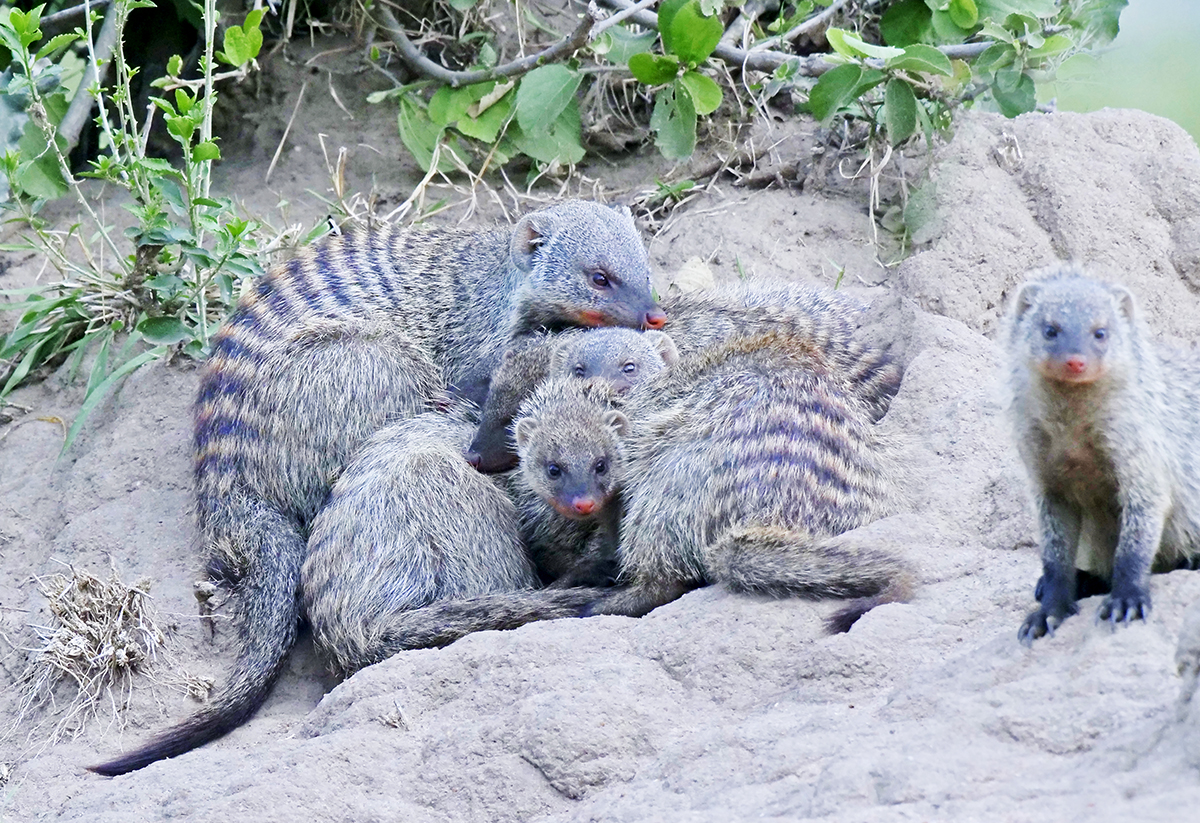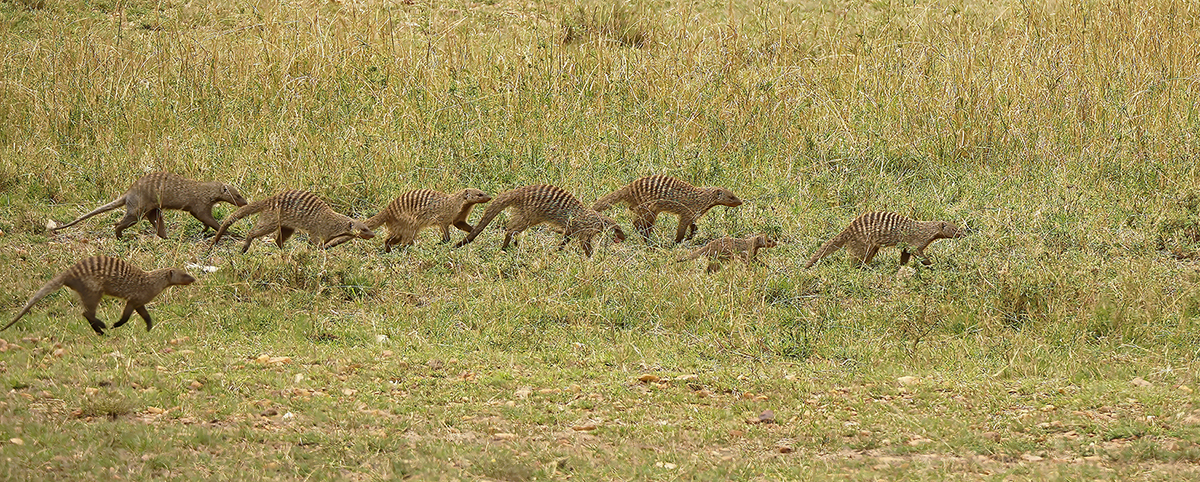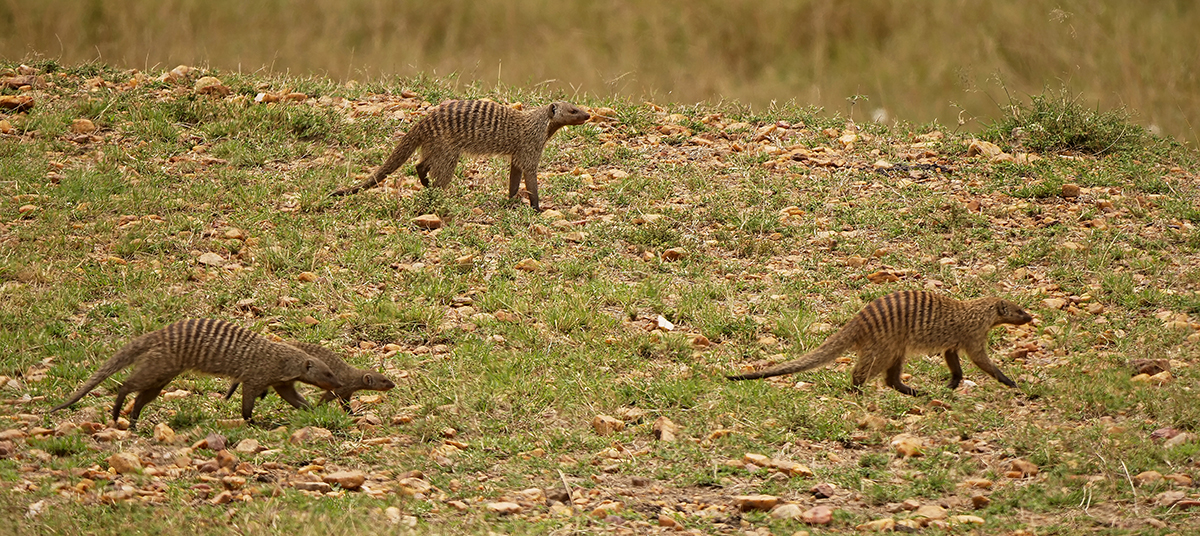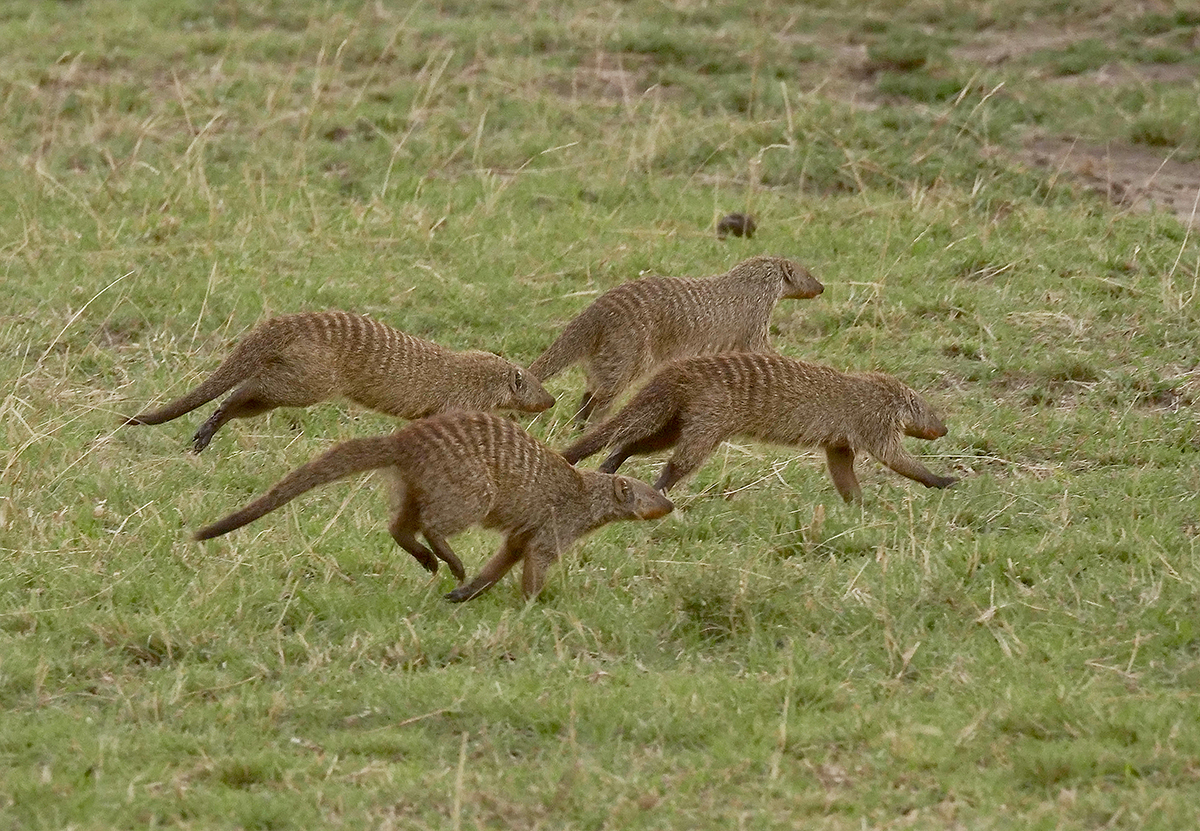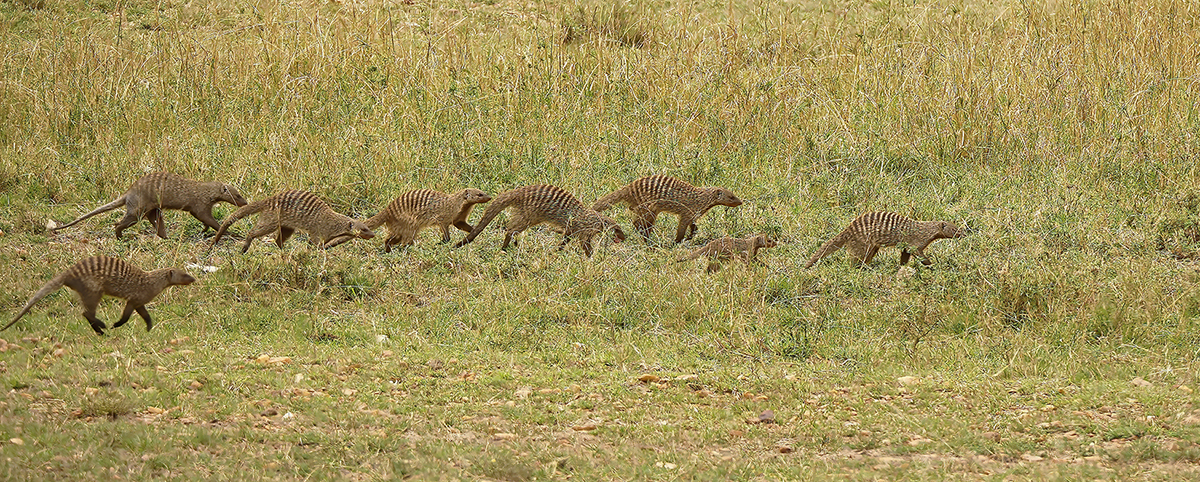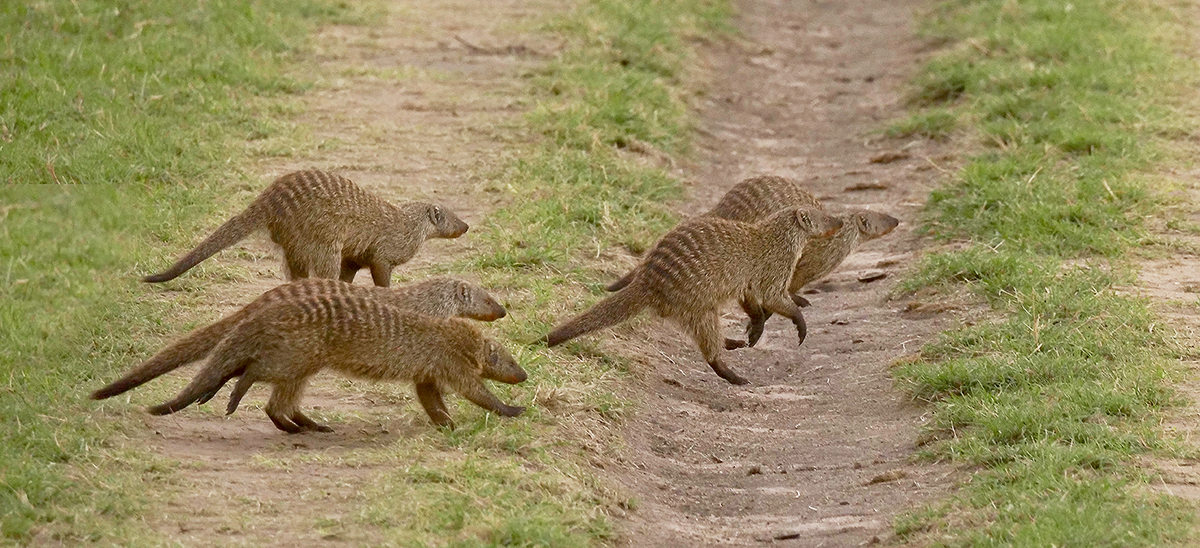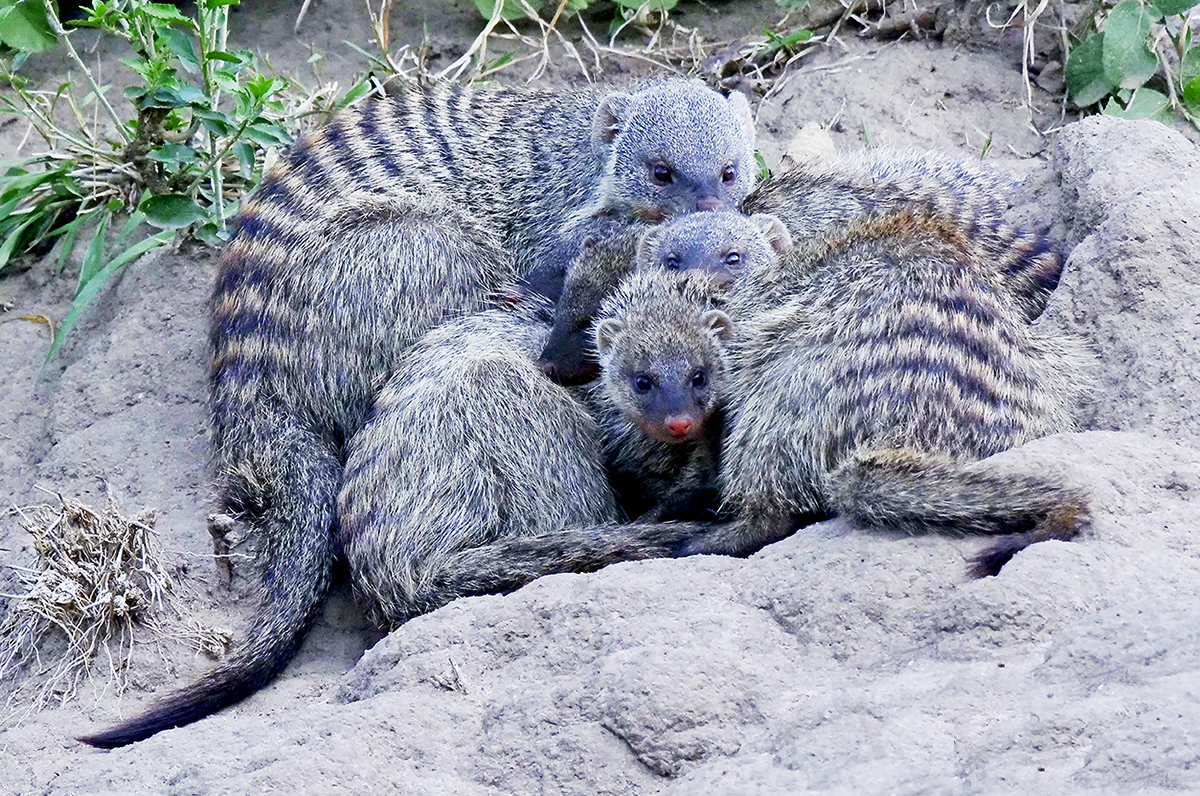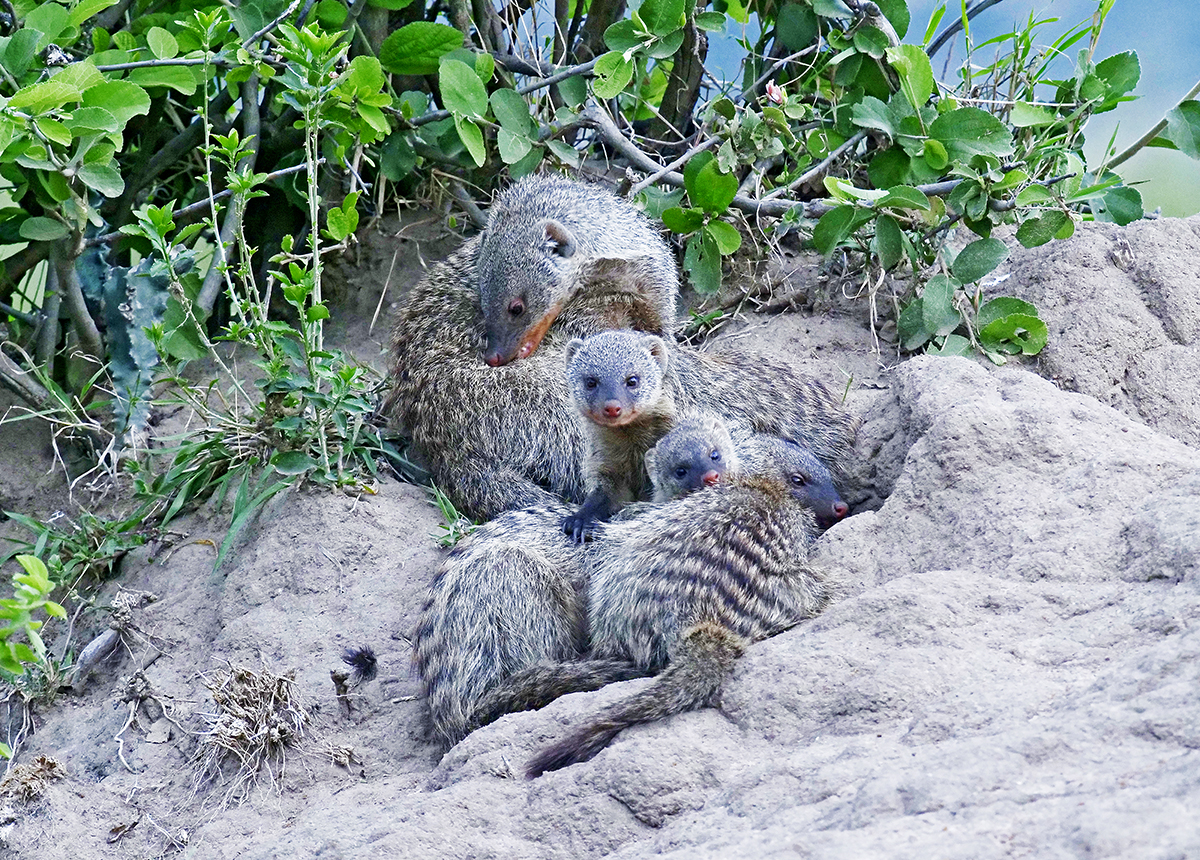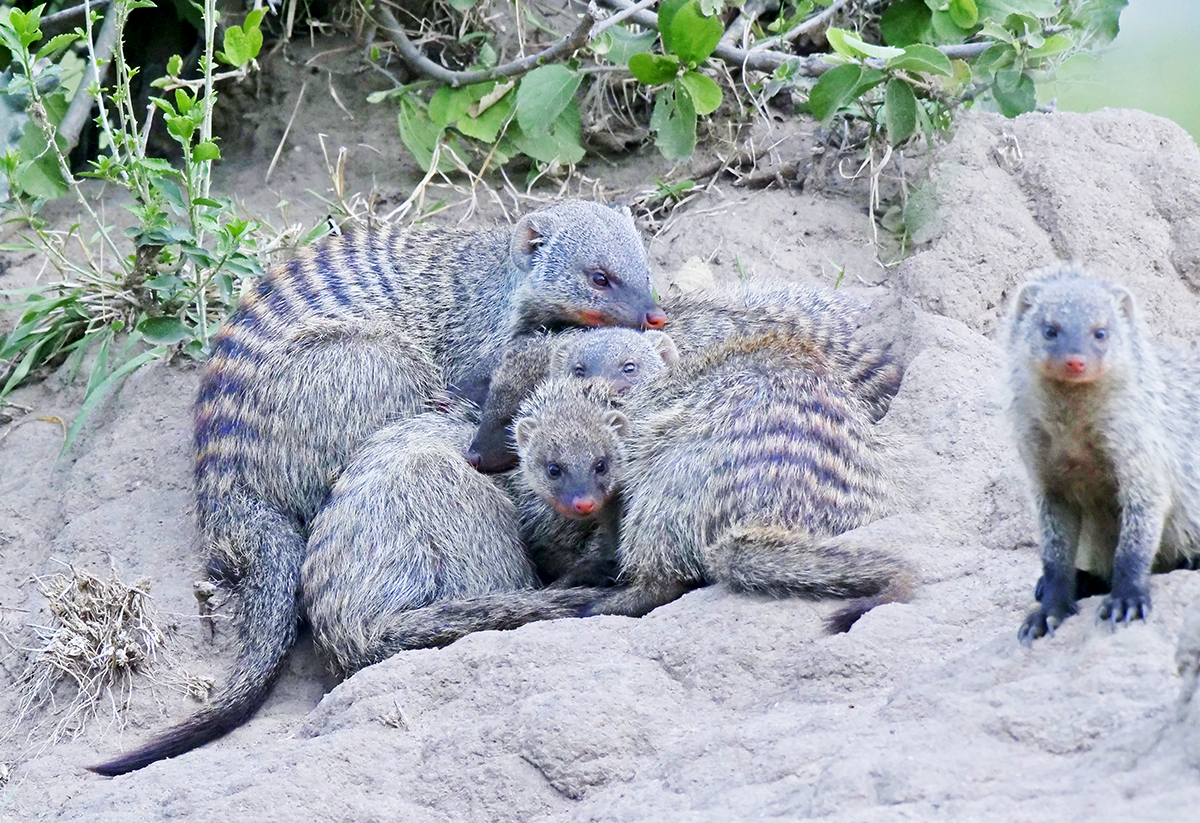Banded Mongoose – Maasai Mara, Kenya, East Africa.

Banded Mongoose
The Banded mongoose is gregarious and diurnal, living in packs with 10 to 20 members. Packs usually remain together in a group in the same area, but forage individually. They may hunt together to kill larger prey, such as sand snakes. Their home range can measure 0.8 to 4 sq km, and they prefer to use an old termite mound as a den. A pack’s social organization seems to be matriarchal. Packs care for their young and also look after invalids and elderly, for example, by warning them about danger, grooming them, and giving them access to food. These animals are somewhat nomadic and will not inhabit one particular sheltering area or den for long, usually no more than several days or weeks. At a preferred location they may remain a little longer, and often will return to a favorite shelter site or den to re-use it repeatedly.
The Banded mongoose is a long, slim carnivore, widespread throughout much of sub-Saharan Africa. It has distinctive dark bands running horizontally across its back, going from the base of its neck to the start of its tail. These bands enable the banded mongoose to be distinguished from the Common dwarf mongoose, which is smaller, occupies similar habitats to the Banded mongoose and has a social structure that is similar. Banded mongooses have a wiry coat that ranges in colour from grey to grey-brown, while the tip of their tapered tail is black or a darker brown.
The Banded mongoose lives in sub-Saharan Africa as far north as Somalia and Sudan. Although it does occur in Gambia and Senegal, it is generally considered as rare in West Africa. It occupies a variety of habitats, including brush-land and grassland, but prefers wooded areas. It is not found in drier areas, such as semi-desert and desert habitats.
